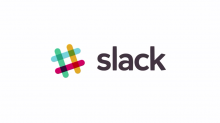
Michael DeFranco is the CEO and Founder of Lua.
Often times, budding entrepreneurs think the hardest part of starting a business is just that: Starting it. The simple act of biting the bullet and going it alone. Yet with most good businesses come future employees; and with every employee comes management and mentorship challenges and opportunities.
Today, the challenges of simply managing employees are compounded by the ubiquity of working remote. How many entrepreneurs wake up to notices of employees deciding to work from home or letting you know that they’re “online… but sitting in traffic”?
Most employees don’t abuse the privileges of mobility, but what do you do when you have employees that are no longer engaging with their team or not handling their assignments at the levels needed to help your business scale simply because they’re not always in the same room?
The challenges of remote management
Not only is mobility leading to the employee falling short of expectations, a non-responsive team member can put a huge damper on the productivity, efficiency and creative output of those that have to work with them.
We’ve all been in the scenario where you send an email and your only option is to wait – it’s not a proactive situation. When you can’t turn to your employee, or stop by their desk to get the answer in a timely manner you are swiftly ushered out of the driver’s seat of your own productivity.
Infuriating as that is, it’s only made worse with the ever-present “just following up” note, subsequent phone calls, even a text message as a last ditch effort. The real problem with these situations is that with every touchpoint, a few components are heightened: your need for an answer and your irritation with their lack of responsiveness.
So how can you respond when your employees don’t?
I’m a firm believer that this workplace problem is solvable by ensuring channel and message alignment. For example, email, while distributed and somewhat magical, is not the right channel for a question where a word or two will suffice. It’s also not the best channel to send a message for which you need an answer stat.
The most successful organizations I interact with offer employees professional solutions for the three most common forms of messages: email that’s always-on but appropriate for longer form or official communications, quick chat-like messages via mobile app or IM that require immediate attention from an individual, a team or your whole company, and group calling.
With those options and colleagues positively influencing one another’s behaviors, you’ll see the right messages start to funnel towards the right platform to ensure speed of response and thereby productivity across even the most lackadaisical distributed team.
Consider this common challenge: I need to get a hold of my co-founders, right now. One workflow towards a solution is to send an email to ask if they’re available, wait for them both to confirm when they’re free, send an email or calendar invite with a dial-in, ensure everyone dials in to the right number at the right time when we’re all often in different time zones.
Ever tried to call into a dial-in from your mobile device? The back and forth of looking for the login code while you’re dialed in – it’s crazy that people still operate like that.
One game-changing solution we employ at Lua is two-touch conference calling meaning that I can initiate a call with them and their phones ring simultaneously – no dial-ins. By directly reaching out to people you’re reducing the barriers to a given interaction and getting things done with speed, accuracy and ease. Two quick taps of the screen beats several emails and a conference bridge any day.
 Time-to-action can also be accelerated via the right kind of messaging to an individual, a team or a whole organization. Obviously, the enterprise messaging space is blowing up with Slack becoming the latest startup to hit a billion dollar valuation.
Time-to-action can also be accelerated via the right kind of messaging to an individual, a team or a whole organization. Obviously, the enterprise messaging space is blowing up with Slack becoming the latest startup to hit a billion dollar valuation.
There’s also HipChat, Cotap, TigerText, Avaamo and others on the block competing with legacy players from Microsoft Lync to Salesforce Chatter.
The question should be, what do I need my messaging solution to actually do? We often hear in technology that you want to “do one thing exceptionally well” and messaging is important enough of a channel to warrant focused solutions. However, 100 integration partners later and a solution can become just as much of a time sink as it was a value-add.
Have backup options
I genuinely believe that most employees want to do a good job. They want to support their teammates and they want to feel productive and that their contribution matters to their organization. Email alone is not enough to enable efficient workflows anymore.
That’s not to say it’s not incredibly valuable, but it needs to be freed of correspondence that is best suited to another channel. By providing the right solutions to deliver the specific types of communications that your team is reliant on to get their jobs done, you will see the response rate increase both on those new channels and on internal emails as well. That’s a promise.
Read next: The most valuable lessons I learned from managing a virtual team
Top image photo by Allison Joyce/Getty Images
Get the TNW newsletter
Get the most important tech news in your inbox each week.






